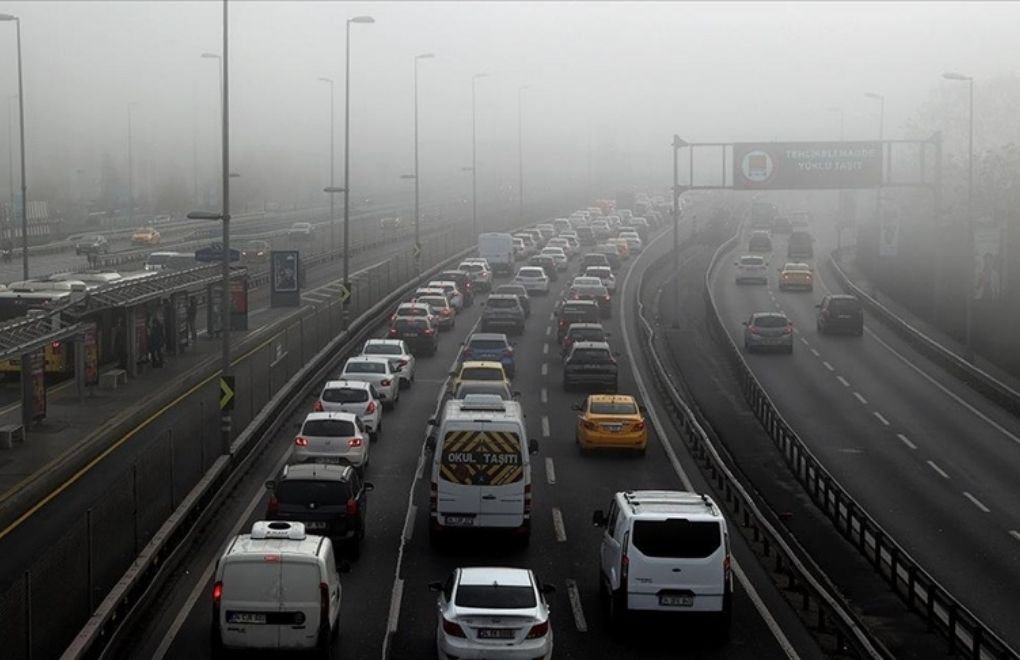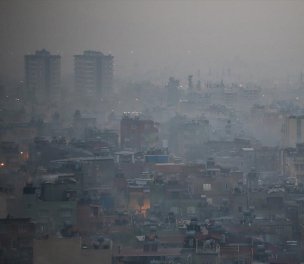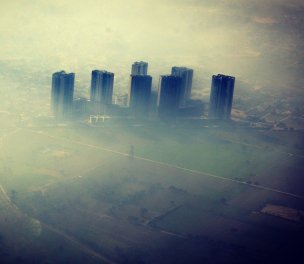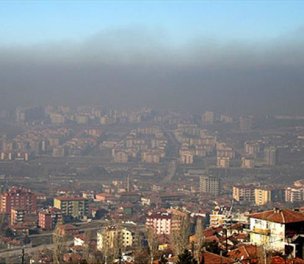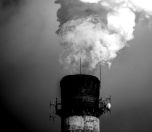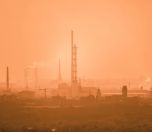* Photo: Anadolu Agency (AA)
Click to read the article in Turkish
The measures adopted during the COVID-19 pandemic led several people to stay home and not drive, especially during the periods of lockdown, which first brought about an improvement in air quality.
However, with the onset of normalization, air pollution saw a decrease in some periods while it increased in others.
As reported by the state-run Anadolu Agency (AA), according to the data collected by the air quality measurement stations of the İstanbul Metropolitan Municipality, the rate of particulate matter (PM10) air pollution did not change in 2021 when compared to the previous year.
The highest pollution rate in Sultangazi
Some highlights from the data are as follows:
- The station which recorded the highest rate of air pollution in İstanbul in 2021 was the Sultangazi 3 station with 81.66 percent, which was followed by the Sultangazi 2 station with 63.77 percent and by the Göztepe station with 61.91 percent.
- The station which measured the lowest rate of air pollution in the same period was the Kumköy station with 13.24 percent, which was followed by the Büyükada station with 15.61 percent, by the Kandilli station with 21.76 percent and by the Üskürdar 1 station with 24.45 percent.
- When compared to the previous year, the rate of air pollution decreased in 18 stations while it increased in 17 stations in 2021.
- When the year 2021 is compared with 2020, it is seen that the highest drop in air pollution was seen in Alibeyköy with 28 percent, which was followed by Sultangazi with 22 percent, by Göztepe with 17 percent, by Kağıthane with 15 percent and by Arnavutköy with 14 percent. Air pollution in Kadıköy dropped by 1 percent in this period.
- The stations which recorded the highest average air pollution between 2020 and 2021 were the Kandilli 1 station with 57 percent, Sarıyer with 56 percent, Ümraniye with 31 percent, Selimiye and Sultangazi 2 with 24 percent and Beşiktaş with 20 percent.
- In this period, air pollution saw a 1-percent increase in Mecidiyeköy.
NO2 pollution increased
According to the data collected by the air quality measurement stations of the İstanbul Metropolitan Municipality in November 2021, the nitrogen dioxide (NO2) air pollution increased across the city in the period of January 1, 2021 and November 12, 2021.
In this 10-month period, the NO2 air pollution saw a 5-percent increase when compared to the same period of the previous year, when lockdown days due to the COVID-19 pandemic were more frequent.
What about 2020?
According to the "Dark Report 2021: Air Pollution and Health Effects" report of the Right to Clean Air Platform, the level of carcinogen fine particulate matter (PM.25) could not be sufficiently measured in Turkey's 42 cities in 2020. When the data on 72 cities with sufficient data on PM10 levels were examined, it was seen that air pollution was above national limits in 45.
Focusing on the air quality in the country in the past 5 years, the report noted that there was an increase in the number of air quality measurement stations in 2020. However, as the official mortality data was not announced by the Turkish Statistical Institute (TurkStat) for 2020, the number of deaths caused by air pollution could not be specified.
According to the report, the average PM10 in 2020 was below the previous years in İstanbul. However, experts warned that even this level was two times higher than the World Health Organization (WHO) guideline values. The PM10 air pollution in İstanbul's Mecidiyeköy, Sultangazi, Esenyurt and Alibeyköy districts was three times more than the WHO guidelines.
UN: 7 million deaths in a year
The particulate matters with a diameter of less than 2.5 micrometers may lead to premature deaths by infiltrating deep into lungs. Moreover, the nitrogen dioxide emitted from cars, lorries and coal-fired power plants and the ozone level on earth may cause premature deaths.
According to the United Nations (UN) data, seven million people lose their lives because of air pollution across the world every year. This rate is as high as the deaths caused by smoking and poor eating habits.
Also, 91 percent of the world population live in geographies where the air quality is lower than the limits set by the World Health Organization (WHO). The WHO says that 4.2 million deaths are caused by outdoor air pollution across the world every day. 3.8 million deaths are caused by being exposed to the cookers used at homes and running on dirty fuels. (TP/SD)




